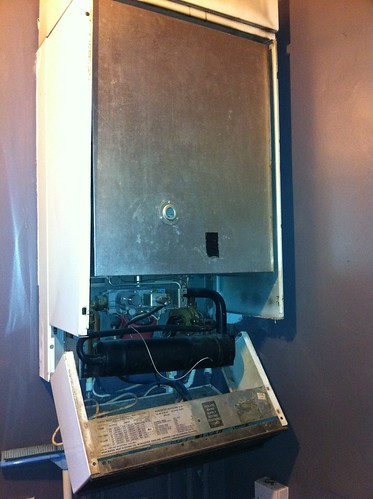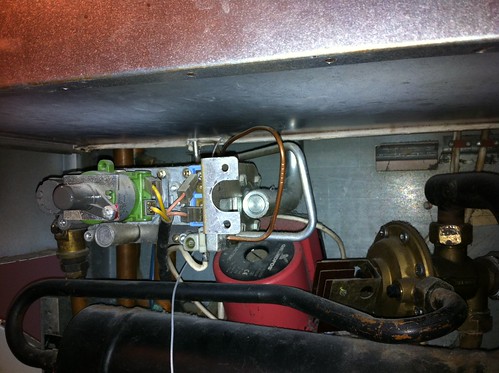Hi All,
I've an ancient Worcester Heatslave 9.24 (Balanced flue, electronic, white fronted - 47-311-02) Combi boiler.
It's clearly an ancient boiler and quite ready for replacing, however it's been reasonable reliable for me and I've only had to change basic parts until now - Pump and Diaphragm.
It seemed to have gone out some time on Friday evening and didn't re-light, electronically it seems fine and the pump is still running from what I can hear.
I don't seem to be able to re-light the pilot light though - I'm unable to see a spark in when I look through the window on the boiler and depress the red spark ignitor button.
I suspected therefore the spark igniter needs replacing and have located the part online and ordered one.
However, I've removed the old one and testing it on the bench it does seem to be generating a spark, the white cable from it was good and appears to be free of cracks or bends/breaks. It dissappears up into the metal shield, I've been unable to verify it from that point onwards as I've never removed that portion of the boiler (just the white removable cover on the front).
My question is: Does the spark on this thing look strong enough that it should work? Am I perhaps looking for an earth somewhere, rather than needing a new ignitor?
There's a video of the spark ignitor being fired "on the bench", here:
And for reference here is the boiler:


All help or guidance will be most gratefully received!
Thanks,
John
I've an ancient Worcester Heatslave 9.24 (Balanced flue, electronic, white fronted - 47-311-02) Combi boiler.
It's clearly an ancient boiler and quite ready for replacing, however it's been reasonable reliable for me and I've only had to change basic parts until now - Pump and Diaphragm.
It seemed to have gone out some time on Friday evening and didn't re-light, electronically it seems fine and the pump is still running from what I can hear.
I don't seem to be able to re-light the pilot light though - I'm unable to see a spark in when I look through the window on the boiler and depress the red spark ignitor button.
I suspected therefore the spark igniter needs replacing and have located the part online and ordered one.
However, I've removed the old one and testing it on the bench it does seem to be generating a spark, the white cable from it was good and appears to be free of cracks or bends/breaks. It dissappears up into the metal shield, I've been unable to verify it from that point onwards as I've never removed that portion of the boiler (just the white removable cover on the front).
My question is: Does the spark on this thing look strong enough that it should work? Am I perhaps looking for an earth somewhere, rather than needing a new ignitor?
There's a video of the spark ignitor being fired "on the bench", here:
And for reference here is the boiler:


All help or guidance will be most gratefully received!
Thanks,
John

